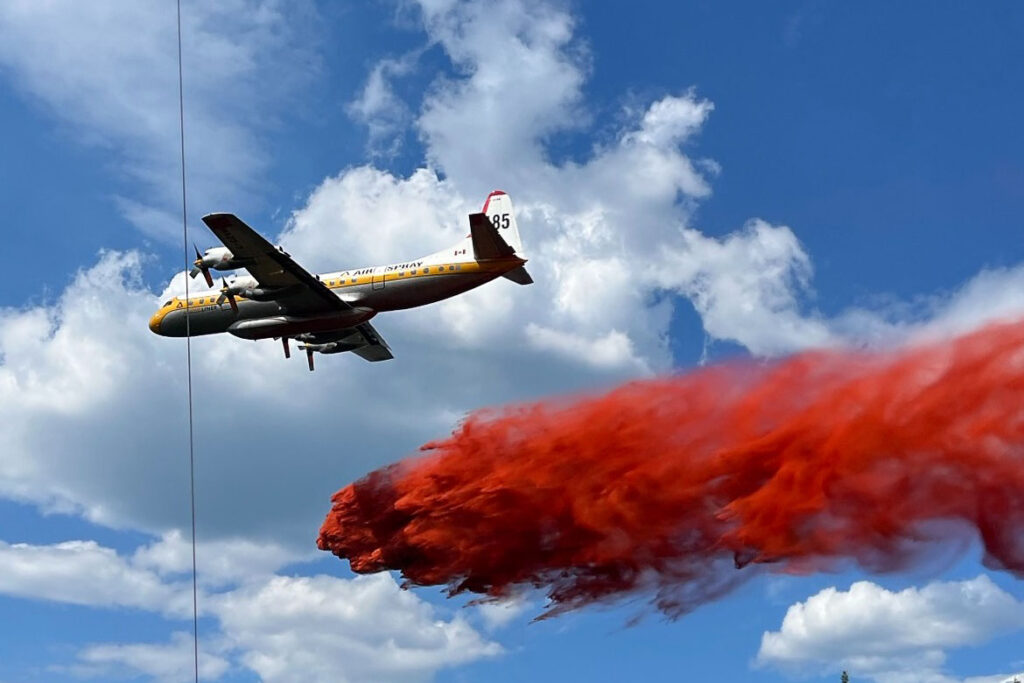With summer winding down, the Administrations for the Town of Whitecourt and Woodlands County
recently wrapped up the last few months, providing finalized information from the fire events that
affected the area. Sheldon Schoepp, Manager of Protective Services in Woodlands County, and Lee
Hardman, Director of Community Safety for Whitecourt, recently presented the activity from spring and
summer to their respective councils.
On May 5, 2023, there was a rash of wildland fire activity detected in the region, several within
proximity of Woodlands County. “We had three fairly large wildland fires that were indicated to us from
the Government of Alberta and Alberta Wildfire,” explained Schoepp, speaking of the lightning-caused
fires near Shiningbank, Fox Creek and Swan Hills.
He explained that though all three fires grabbed their attention, the Shiningbank wildfire took priority.
“It just touched our County. Not very much entered into Woodlands, but it did enter. In reference to
where it was located, it was 27 kilometres southwest of the Town of Whitecourt footprint.” Schoepp
said that residents in the area were quickly notified and that emergency measures were implemented.
“We contacted the residents in the area by phone and in person. I was out in the area myself, along with
our fire departments, emergency responders, and other agencies. We had face-to-face contact with
residents out there.”
Preparedness activities took place, including structural protection equipment on ten County residences
in the Anselmo area, done in step with the Whitecourt Fire Department. They also prepped water
sources near the area in advance, including three 400-barrel water tanks. “As we know, water sources
are very sparse out there, so we wanted to make sure that we had enough water just in case these fires
decided to come into more of Woodlands County,” said Schoepp.
Woodlands County had roaming fire watch crews running 24 hours a day, for roughly seven days, to
keep a close eye on the north-northeast portion of the Shiningbank fire. Crews had their fingers ready
on the trigger to radio of any movement into the County. They also hired a fire safety contractor
company and placed them on standby in case they needed extra help. Woodlands applied to the
Disaster Relief Program from the Government of Alberta for $112,936.00, hoping the program will cover
most of the proactive costs incurred. Thankfully, no homes in Woodlands County were affected by the
fires and several residents had home assessments done by the Whitecourt Fire Department to further
protect themselves.
The numerous regional fires brought heavy smoke, fear, and hundreds of evacuees to the Town of
Whitecourt. With Woodlands County and Whitecourt working together to keep watch on the nearby
fires, Whitecourt focused on becoming a destination for those fleeing, seeking a soft place to land. On
May 6, the AJMC morphed into a reception centre for displaced Fox Creek residents, who were later
joined by those from the MD of Greenview and Valleyview.
In the two weeks that the centre remained open, the Town of Whitecourt supported over three
thousand residents from the evacuated communities at a cost of just over $72,000. The Whitecourt Fire
Department also joined the action, helping fight raging infernos in Fox Creek and Edson to the tune of
$144,620. Hardman explained that supportive costs would be recouped from the impacted
municipalities.
Whitecourt continues to be an evacuee holdout with residents from the Northwest Territories. Over 460
have received assistance through the end of August. Whitecourt also sent a crew of four firefighters and
one apparatus to assist efforts in Yellowknife.
At a news conference on September 7, Canada’s Minister of Emergency Preparedness, Harjit Sajjan, said
nearly every province had accessed federal funding due to fires this year. When asked about Canada
creating a national force to fight wildfires, he said all options were on the table. Sajjan added that the
government was looking at preparedness for all kinds of disasters. “We’re looking at all different types
of disasters, doing the lessons learned, and we’ll come out with the appropriate response,” he said.
Specific to wildfires, Energy and Natural Resources Minister Jonathan Wilkinson said Canada’s
unprecedented wildfire season isn’t over yet. Speaking at the same news conference as Sajjan,
Wilkinson said wildland fire activity could extend into late fall or even winter, especially from eastern
Alberta to central Ontario. He added that the fires up north would continue to smoulder.
Over one thousand fires have burned in Alberta this year, and as of Friday, September 15, there were
still 81 active fires. The Lac La Biche Forest Area saw the most fire activity, with 180 fires. The
Whitecourt Forest Area has had 54 fires so far, including several large footprint fires, including the Fox
Creek fire that grew to over 66,000 ha.
Alberta’s wildfire season runs until October 31, and recent dry, windy weather creates risk. In a recent
social media post, Alberta Wildfire reminded residents to “use caution when recreating in the forest”
and to be extra careful when extinguishing campfires. “Soak it, stir it, and soak it again until the ashes
are cool to the touch. When we send firefighters to extinguish abandoned campfires, we are taking
them away from other duties,” read the post.








More Stories
Community spirit shines at large-scale youth baseball event
Birthday party chaos sung beautifully by Pumpjack Players’ youth in spring musical
Gearing up for another season of cars, cruising and camaraderie